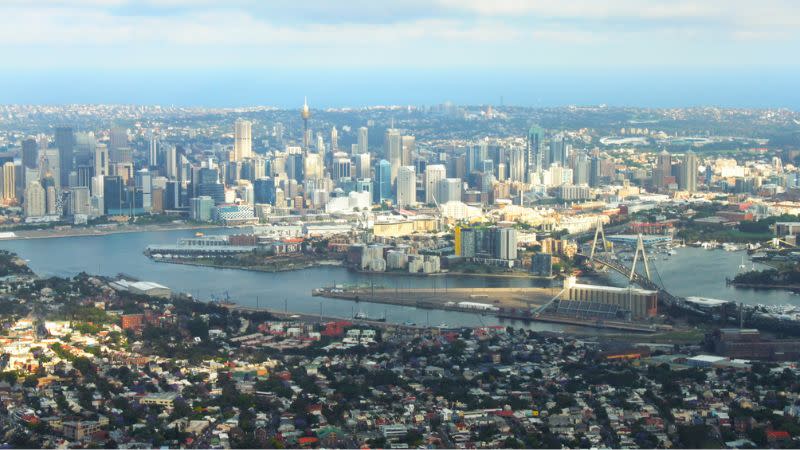It has been a quarter of mixed news for Australia’s office sector with a slight decrease in vacancies but not necessarily for the best reasons.
According to JLL Research, the national CBD office market vacancy rate fell by 0.2 percentage points to 14.2 per cent during the September quarter.
However, the reduction in vacancy was largely attributable to stock withdrawals, according to JLL.
Its research also found positive net absorption of 1500sq m across CBD office markets during the quarter and 90,400sq m for the 12 months to September, 2023.
JLL head of research, Australasia, Andrew Ballantyne said corporate Australia was “navigating a path through macroeconomic headwinds, while addressing productivity and innovation challenges within their own businesses”.
“Organisations are aware of the important role workplace plays in shaping culture.
“While employee flexibility assists in the attraction and retention of a diverse workforce, workplace design can support in-person collaboration and productivity initiatives.”
JLL head of office leasing, Australia, Tim O’Connor said that although the quality story was well articulated across Australia’s office leasing market, it continued to increase in relevance.
“Most organisations relocating their operations are moving into higher quality office buildings and this is being reflected in the prime and secondary grade net absorption results,” he said.
Across Australia’s CBD office markets, JLL said it had recorded 214,900sq m of prime net absorption while secondary grade assets were in negative territory to the tune of 76,000sq m during the 12 months to September, 2023.
According to the JLL data, the Adelaide CBD recorded the strongest net absorption result of any monitored CBD office market during the quarter with 37,500 square metres.
During the past 12 months, the Adelaide CBD has recorded 45,300sq m of net absorption, which is 3.5 times higher than the 25-year average of 12,800 square metres.
“Adelaide has a shortage of modern office buildings and the completion of new developments in 2023 has allowed organisations to move into higher quality stock,” Ballantyne said.
“Furthermore, the high level of amenity in the Adelaide CBD has resulted in several organisations relocating their operations to the CBD to attract a more diverse range of skilled workers.”
The Perth CBD was also a strong performer with 22,300sq m of net absorption and 72,700sq m for the 12 months to September.
While Perth’s headline vacancy rate remained elevated at 17.3 per cent in the quarter, vacancy was now at the lowest level since late 2014.
“Perth has performed strongly over the past two years. While the resource sector is a major contributor to sentiment in the Western Australia economy, the office leasing market is more diverse with positive leasing enquiry from the public sector, finance and professional services firms,” O’Connor said.
Meanwhile, the Brisbane CBD net absorption result was flat with just 800sq m for the quarter and 32,900sq m of net absorption in the prime sector, offset by a contraction of 32,100 sqm for secondary grade assets.
▲ The Sydney result underlines the flight to quality for the officer sector.
The Brisbane CBD vacancy rate contracted to 11.5 per cent during the quarter, with prime vacancy dropping into single-digit territory for the first time since the end of 2019.
“The Brisbane market is benefitting from private and public sector organisations moving into expansionary mode,” O’Connor said.
“A sharp reduction in the number of prime grade contiguous space options during the past 24 months has exerted upward pressure on market rents.”
Brisbane CBD prime gross effective rents increased by 4.8 per cent in the quarter and 11.3 per cent in the 12 months to September 2023.
The Sydney CBD recorded negative net absorption in the quarter of 25,100sq m, which JLL said could be attributed to new subleases being offered and several multi-national organisations consolidating their occupational footprint.
“The Sydney CBD office market is a story of location and quality,” Ballantyne said.
“During the past 12 months, the city’s core precinct recorded 61,000sq m of positive net absorption, while other precincts experienced a reduction in occupied stock.”
Also in negative territory, the Melbourne CBD was down 9800sq m for the period.
Leasing activity remained strong for prime grade assets with 19,900 sqm of positive net absorption, while secondary grade assets recorded a contraction of 29,700 square metres.
Canberra recorded negative net absorption of 24,200sq m and an increase in vacancy to 8.0 per cent.
However, the quality divergence is evident in Canberra with positive net absorption for prime (+12,200sq m) grade assets and a contraction in secondary stock (-28,000sq m) for the 12 months to September, 2023, JLL said.











